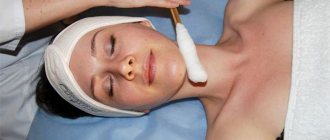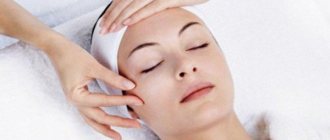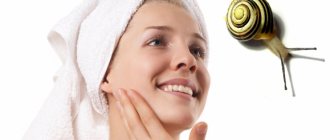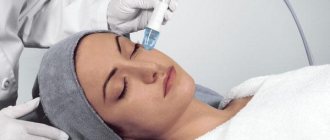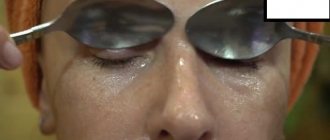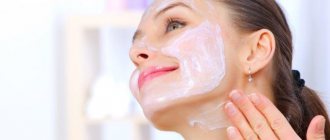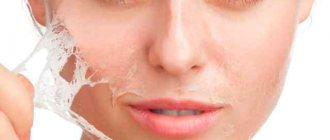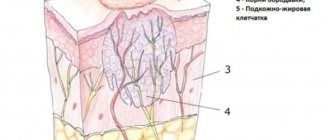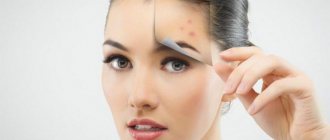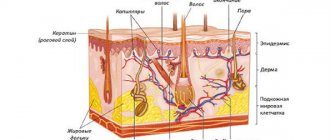Today, the top most popular methods, of course, are photorejuvenation for acne! But before we talk in more detail about the technique, let's understand the causes of acne.
Acne is an inflammatory disease of the skin that appears as a result of disruption of the sebaceous glands. Also, as a result of problems with self-cleansing of the skin from dead cells that clog hair follicles.
The causes of acne can be:
- Poor skin cleansing and insufficient hygiene
- Hormonal imbalances
- Genetic predisposition
- Gastrointestinal tract dysfunction
- Problems with the sebaceous glands
- Stress
- Poor nutrition
- Harmful effects of the environment
- Malfunctions of the immune system
What factors contribute to the appearance of acne?
Despite the fact that modern science has not yet determined the exact causes of acne, it assigns the main role in the mechanism of its development to a painful skin condition called seborrhea.
The disease is characterized by a decrease in the bactericidal effect of sebum, which causes excessive activity of pathogenic cocci bacteria. Most often, acne affects boys and girls and disappears after the age of 25. Stimulating factors are stress, menstruation, congenital factors, and taking certain pharmacological drugs. Despite the fact that the immune system actively fights pathogenic bacteria, pus accumulates under the skin, forming ulcers. Trying to get rid of them on their own, patients often introduce an infection there, as a result of which the disease spreads even more.
The etiology of the disease is as follows:
- Congenital predisposition;
- Hormonal imbalances;
- Gastrointestinal pathologies;
- Hyperactivity of the sebaceous glands;
- Pathogenic microorganisms;
- Damage to the skin with inflammatory processes;
- Taking anabolic steroids;
- Taking medications with halogens, lithium and barbiturates.
How long does it take to perform phototherapy for acne?
In fact, photorejuvenation for acne gives noticeable results after the first procedure after a couple of weeks:
- The number of rashes is significantly reduced
- Pores become smaller
- The work of the sebaceous glands is normalized
- Skin becomes more elastic
- The number of blackheads is significantly reduced
But, phototreatment of acne, of course, is a course procedure. On average, the course is approximately 5-10 procedures with an interval of 3 weeks.
The exact number of photorejuvenation sessions from anke is determined based on the condition of the skin and the stage of the disease. If photo-treatment of acne was started at the initial stage, then a minimum number of procedures is sufficient, but the chronic form will take a little longer to treat. You may have to include additional procedures, such as peelings or injection techniques.
Features of the method of phototherapy of acne with the “Acne” filter
Phototherapy of acne involves the use of special lamps that create waves with a length of 405–420 nm. The neodymium laser, which provides sterilization of inflammation, has also proven its effectiveness.
Special light filters that are used in the process allow you to select the optimal mode of operation of the equipment for different stages of acne. The Acne light filter provides a special wavelength, thanks to which our doctor achieves maximum treatment efficiency.
It is also facilitated by the fact that laser beams do not scatter, but have a very precise spectrum of influence, affecting exclusively the affected areas of the skin. In the process, excess melatonin and hemoglobin are eliminated, which lead to the appearance of cosmetic defects in the form of hyperpigmentation and spider veins.
Phototreatment of acne with Acne filters is carried out using two wave ranges from 400 to 600 nm and from 800 to 1200 nm. Thus, it is possible to achieve a double impact effect - thermal and toxic:
- The first ensures heating of the sebaceous glands at great depths, thus destroying bacteria that cause the disease and providing an anti-inflammatory effect;
- The second involves active absorption by porphyrins, which also allows the destruction of pathogenic bacteria, eliminating their negative impact on the condition of the skin.
Effect of the procedure
During phototherapy, the influence of the UV spectrum on cells and tissues is used. It has several positive effects at once:
- stimulation of vitamin D synthesis;
- stopping and relieving inflammation;
- increasing the body's nonspecific resistance to infectious agents;
- prevention of dermatological diseases;
- skin tightening;
- strengthening regenerative processes;
- increased skin turgor;
- regulation of metabolism;
- treatment of skin diseases;
- getting rid of signs of stress on the face.
Phototherapy does not give immediate results. The effect is achieved gradually, which prevents the tissues from perceiving the therapy as stress. As a result, the skin becomes younger, an inner glow appears, and dermatological problems go away.
Phototherapy in cosmetology has a number of advantages compared to other methods. The main advantages of the procedure are:
- no pain;
- precise selection of dosage for a specific person and his problems;
- absence of consequences and risks associated with surgical treatment;
- non-invasive;
- maintaining the effect for a long time (skin condition improves within a month after the procedure);
- protection of the epidermis from the effects of environmental factors and internal age-related changes.
This allowed phototherapy to gain greater popularity and recognition among patients. Now the procedure is carried out by most aesthetic cosmetology clinics.
Contraindications to phototherapy
Acne treatment with phototherapy has virtually no absolute contraindications. However, there are clinical situations and pathological conditions that require special care and the doctor's understanding of the risks he is taking when prescribing phototherapy. They are presented as follows:
- Tuberculosis - may worsen due to phototherapy procedures;
- Eye diseases - the procedure may cause increased sensitivity to bright light;
- Skin diseases characterized by photosensitivity of the skin;
- Taking dematotoxic drugs or herbal extracts that may cause increased sensitivity to light;
- Porphyria and thyrotoxicosis, taking methotrexate or chloroquine.
What are the advantages of acne phototherapy?
Looking at the before and after photo of acne phototherapy, we can conclude that it gives good results. Two to three weeks after its onset, a significant difference is noticeable: the skin becomes smoother and looks healthy, and the rash becomes much smaller.
A standard course of treatment involves 8 to 10 procedures and can eliminate up to 90% of acne, even if the disease is at an advanced stage. However, these are not all the advantages of the procedure - others are as follows:
- Safety of the procedure due to targeted effects exclusively on the affected areas;
- Absolute painlessness of treatment and recovery period;
- The first results are noticeable within a week;
- Comfort during the procedure thanks to the contact cooling system;
- Additional beneficial effects in the form of rejuvenation of skin cells, elimination of rosacea, age spots and freckles.
In what cases is phototherapy performed?
Every day this procedure is becoming more and more popular. As a rule, it is prescribed in order to:
- relieve the patient from skin diseases, namely psoriasis, acne, neurodermatitis, eczema;
- heal trophic ulcerative formations;
- give the skin an aesthetic appearance. Phototherapy is often used to rejuvenate the skin, remove wrinkles and age spots. Sometimes people even come in to have their tattoos removed.
During the procedure, ultraviolet rays affect the retina of the eyes, so this procedure can often relieve the patient of depression and mental illness.
Light therapy is very good at helping to restore the human body after long flights and time zone changes. Also, based on the results of recent laboratory studies, doctors have proven that light therapy has a positive effect on skin with oncological processes.
Recently, phototherapy has become increasingly used to treat newborns who were diagnosed with jaundice at birth.
Acne phototherapy procedure and duration
Phototreatment of acne at the Doctor Nearby clinic is carried out in accordance with all international rules and safety standards. Before prescribing a course of treatment, our specialist determines the severity of the disease and collects anamnesis, since some diseases are a contraindication to phototherapy. Only after assessing the feasibility of using phototherapy in a particular case will he begin treatment. To enhance the effect, a special gel is applied to the patient’s face, which will improve the effect of the procedure. In addition, be sure to wear safety glasses.
On average, the procedure lasts from 15 minutes to half an hour. The device parameters are selected taking into account the clinical case and the patient’s skin phototype. The procedure is painless thanks to the cooling system. During its process, the patient feels only warmth.
During intense exposure to light energy, the capillaries that feed the skin glands are sealed. As a result, pathogenic bacteria that lead to the development of the disease lose a favorable environment for development and die, acne disappears, and the appearance of new comedones is excluded.
Main indications
Photodynamic therapy for acne treatment is especially effective in treating papules and pustules on the face. That is, the ideal option for prescribing this method would be the third stage of the disease, which is difficult to treat with medications and requires long-term use of medications prescribed by a doctor.
The only disadvantage of photodynamic therapy in the treatment of acne is the cost. The price for one procedure can be a thousand rubles or more.
Author - Anna Mikhailova, dermatologist-cosmetologist of the first category, specialist at the Academy of Scientific Beauty. Especially for the site “Treating Acne”.
Benefits of acne phototherapy in our clinic
Phototherapy for acne at the Doctor Nearby clinic at the Dubrovka metro station is carried out by qualified doctors who have extensive experience. They have at their disposal modern laser equipment “Synchro Play”, which allows them to fight acne, achieving positive results in a short time.
By contacting us, you will eliminate the risk of complications after phototherapy, since our specialists take into account all contraindications and act in accordance with the manufacturer’s recommendations, strictly observing each of them.
You can visit our clinic by appointment at any time convenient for you, including on weekends or holidays.
Acne treatment at the Doctor Nearby clinic is your path to clear, flawless skin!
Difficulties of recovery
Immediately after treatment, redness is noticeable on the skin, and tissue swelling is possible. In those places where there is a cluster of blood vessels, crusts appear that cannot be removed independently. After a few days they will disappear. To consolidate the result, you need:
- for several weeks, lubricate the skin in the treated area with Panthenol every day;
- when going outside, be sure to apply sunscreen cream to the epidermis;
- If possible, completely eliminate or limit smoking and alcohol consumption;
- drink at least 1.5-2 liters of clean water every day;
- take vitamins;
- temporarily exclude or limit the use of decorative cosmetics;
- do not take a hot bath and refuse thermal procedures, do not visit the sauna and bathhouse;
- Avoid direct sunlight for 10-14 days.
